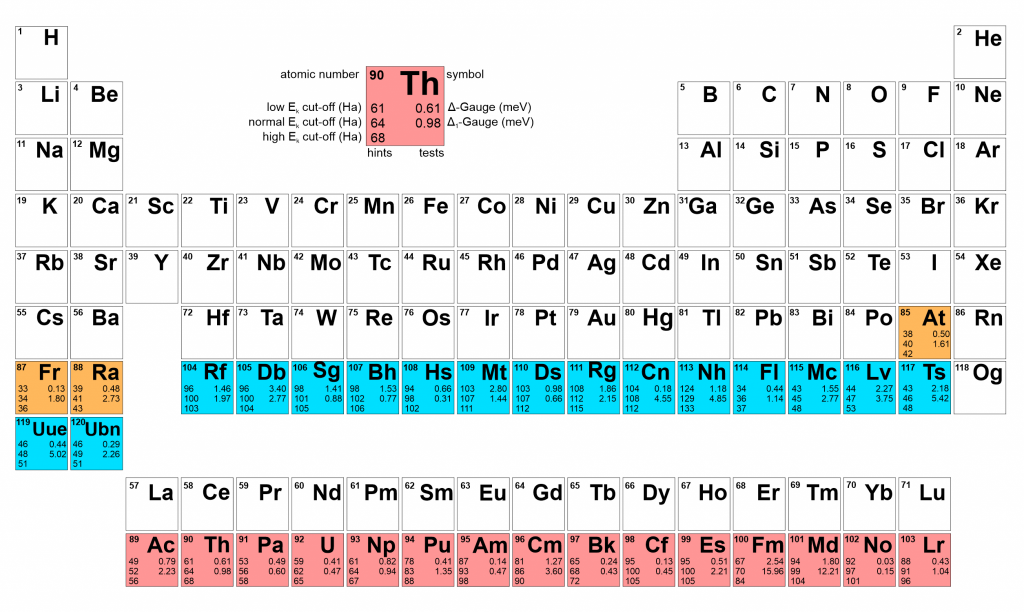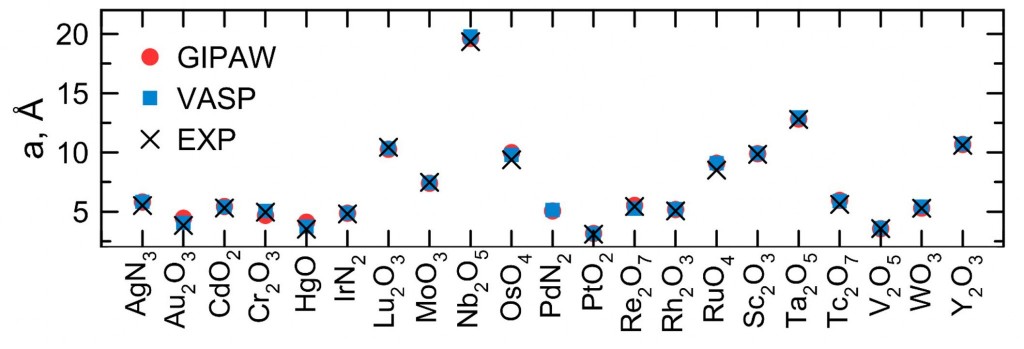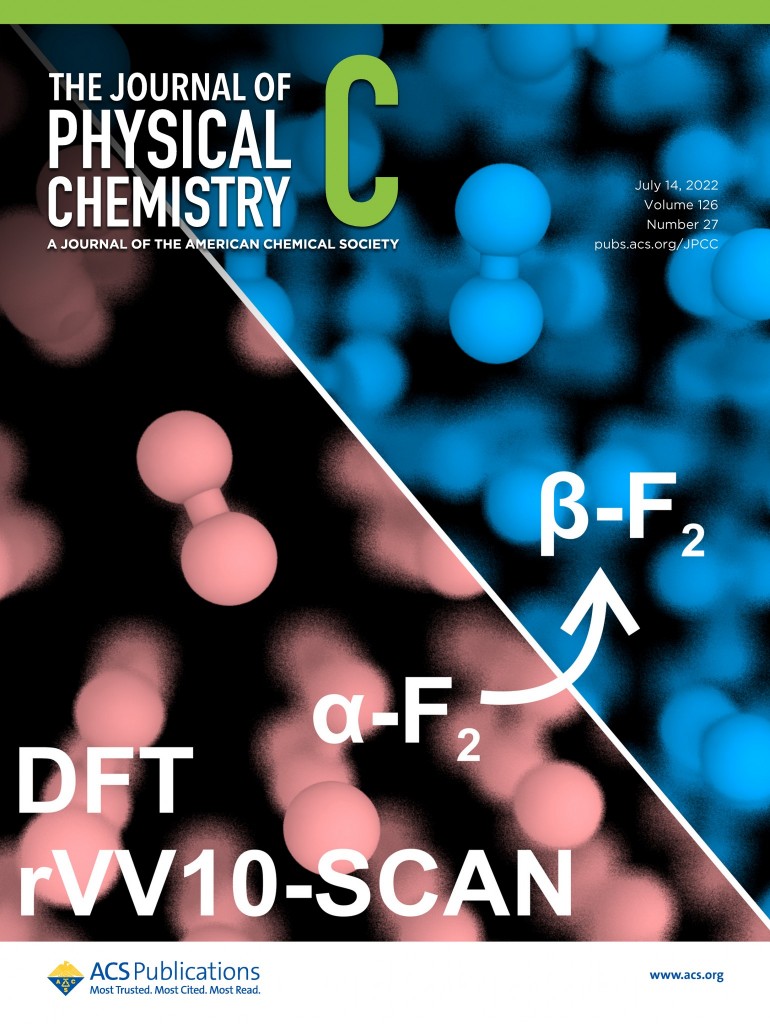Methods for structure investigations
ONCV pseudopotentials for super heavy elements (Comp. Phys. Comm. 2023, 295, 109002)
In this work, we present a series of fully-relativistic optimised norm-conserving Vanderbilt pseudopotentials (ONCVPs) for thirty-four actinides and super-heavy elements. The scalar relativistic version of these ONCVPs is tested by comparing equations of states for crystals, obtained with abinit 9.6, with those obtained by all-electron zeroth-order regular approximation (ZORA) calculations performed with the Amsterdam Modelling Suite BAND code. Δ-Gauge and Δ1-Gauge indicators are used to validate these pseudopotentials. This work is a contribution to the PseudoDojo project, in which pseudopotentials for the whole periodic table are developed and systematically tested. The fully-relativistic pseudopotential files (i.e. including spin-orbit coupling) are available on the PseudoDojo web-interface this http URL under the name NC FR (ONCVPSP) v4.x. Pseudopotentials are made available in psp8 and UPF2 formats, both convenient for abinit, the latter being also suitable for Quantum ESPRESSO.

GIPAW pseudopotentials (Materials 2022, 15 (9), 3347)
We developed a gauge including projected augmented pseudopotentials (GIPAW) of 21 d elements and tested them on, respectively, oxides or nitrides (semiconductors), calculating chemical shift and quadrupolar coupling constant. This work can be considered the first step to improving the ab initio prediction of nuclear magnetic resonance (NMR) parameters, and leaves open the possibility for inorganic compounds to constitute an alternative standard compound, with respect to tetramethylsilane, to calculate the chemical shift. Furthermore, this work represents the possibility to obtain results from first-principles calculations, to train a machine-learning model to solve or refine structures using predicted nuclear magnetic resonance spectra.

Link to download developed GIPAWs
More GIPAWs you can find here
Accurate description of strongly correlated fluorine-based compounds (J. Phys. Chem. C, 2022)
We have found an excellent solution to investigate fluorinated materials using a combination of SCAN (exchange) and rVV10 (correlation) functionals. This was found through the fundamental study of α- and β-fluorine phases showing α-fluorine as the most stable structure at the temperatures lower than 35 K and 0 GPa respect to β-fluorine. Further, we have computed crystal structure evolution under pressure looking for new stable fluorine allotropes using USPEX evolutionary algorithm coupled with SCAN-rVV10 exchange-correlation functional discovering two phase transitions.
